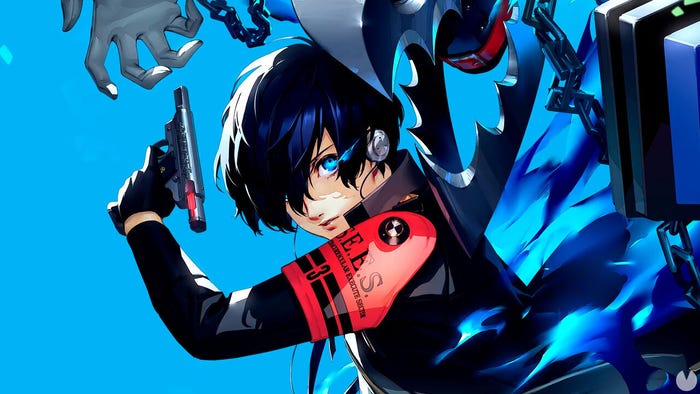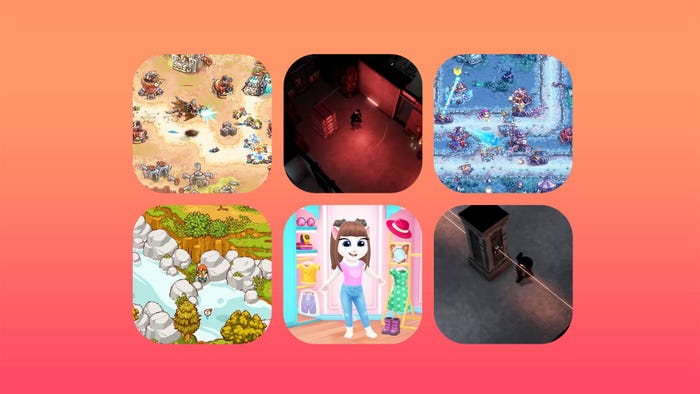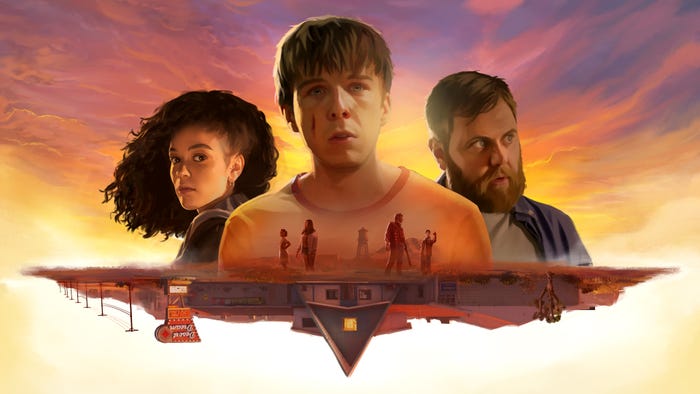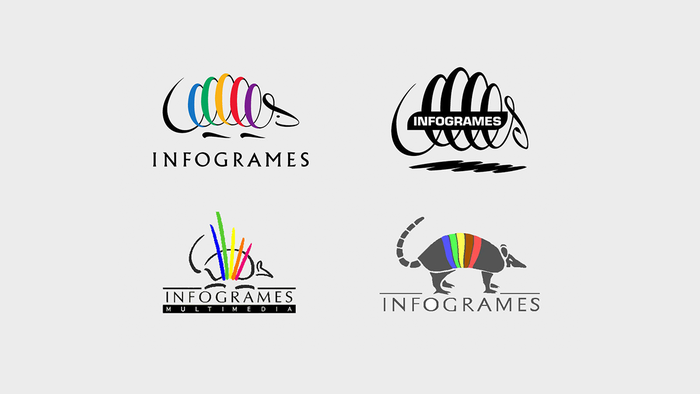
Featured Blog | This community-written post highlights the best of what the game industry has to offer. Read more like it on the Game Developer Blogs.
A "brief" comparison of the benefits of a truly emergent and open-ended game design and structure as opposed to a game of a more traditional, Hollywood-inspired structure.

The average video game, as it is thought of by both mainstream culture and even most gamers, is a heavily-authored gameplay experience with a discrete beginning, end, and climaxes strewn haphazardly about. At this point in the life of the video game, gamers are essentially conditioned to think of games as self-explanatory adventures with a very specific premise, purpose, and linearity. On a fundamental level, the way that gamers approach progression and purpose in a game like Call of Duty 4 is the same way that gamers did back in the mid-1980s as a pudgy plumber tasked with saving a princess. In Call of Duty 4, the set of tools will change from mission to mission, but the player will continue along a carefully-scripted path with intent and focus until that mission's terrorist princess is found and rescued/executed. This method of game design essentially keeps the gameplay bound to the whims of a script or plot, but it provides its players with very well-crafted and well-paced entertainment.
The gaming industry has taken a number of its cues from film. This is not a slight (in the slightest); as an initial influence for narrative form, gameplay pacing, and general presentation, the role of movies have played a significant part in the development of video games. A number of the industry's most popular and enjoyable titles have a great deal of cinematic qualities to them, one of which is the Call of Duty series. Call of Duty has always given players very tightly-designed set piece battles interspersed with in-character/perspective narratives in a manner which, for the very first title in the series, seemed heavily influenced by HBO's Band of Brothers miniseries. Then there are games like Quantic Dream's Indigo Prophecy and forthcoming Heavy Rain which place the foundation of their game design on emulating the experience of cinema through a very limited and constrained set of player actions. These games are, quite literally, interactive movies that ideally take the best aspect of a movie and combine it with the most enjoyable features of a video game. In practice, these games are typically interesting for a single play-through (if that) and allow for minimally-interactive gameplay over a sub-par cinematic experience.



Emergent gameplay is a game design methodology which severs the gameplay management power of narrative, making a video game and its narrative presentation more in line with the benefits of an interactive medium. It is a method of game development which allows game designers and developers to craft a game world and a set of rules and constraints by which a player's actions are governed. The thought (and hope) is that a unique and consistently fresh and interesting game will spring within the game world from the mechanics by which it is governed. The impetus for this is that a game which is governed by its mechanics (and maybe its micro-narratives) is one which serves to empower its players and inspire creativity through experiment. This stands in stark contrast to having the will of a designer govern the path and intent of the player on a situation-to-situation basis, an emergent or open game design places the player within a world to define and experience their own fun.
A game which is wholly designed around the power of dynamism and emergent mechanics is one where a player is his own gameplay experience director; a player manages pace, narrative, difficulty, and any number of other components which make up the specific game. The game's designers abandon total authorship in favor of promoting interaction through player creativity and experimentation. In order to make this methodology work, though, a given game must have a thorough system of game mechanics which has the ability to actively promote and encourage player interaction in meaningful ways while dynamically balancing the game world. It is, in a sense, an economy or ecosystem of "fun." It's an approach to game design which results in a true gaming sandbox, turning the game into what is classically understood to be a "toy" rather than a video game. The difference between these two terms can be seen as nothing more than a linguistic bait-and-switch, but there are some who consider the contrast to be a legitimate differentiation: a video game is a game which provides discrete objectives in a traditionally authored manner and a toy is an interactive sandbox with "no real point."
Labeling a video game as a toy (which often seems to be used in a derogatory sense) then leads to the informed sect of the gaming mass asking: where's the game? This is a question that serves as a plague for the existence of truly open-ended games like Keita Takahashi's recent Noby Noby Boy. Noby Noby Boy, quite literally, gives its players a playground in which gamers can just experience the game mechanics working in harmony with each and the game world as a whole. If you're unfamiliar with the game, I suggest watching a random person play around with the game (the game's site is unique as well). It's almost completely incomprehensible, but it's clear that that the game has some sort of ecosystem in which the player is an agent of... destruction? The purpose and intention of the player's character erm--thing is left entirely up to the player's discretion. Noby Noby Boy is, in this sense, one of the truest examples of a dynamic, emergent game design; however, there is no proper economy of gameplay mechanics. It's a playground where there is no repercussion for player wrong-doing, no presented reasoning for advancement, no rewards for experimentation beyond the absurdity of the basic situation; in short, there is no real reason to play or continue playing Noby Noby Boy. And that's a problem.
Video games aren't toys, but video gaming as an entertainment medium already present players with a number of toy-like qualities such as the promotion of player creativity and experimentation such as the kind of player ingenuity that flourishes in the confines of something like Spore's creature creator. Games can also provide an open playground for entertainment like the aforementioned Noby Noby Boy or, for an example that is representative of the traditionally-held notion of a video game, Real Time World's Crackdown. The problem lies with the fact that video games are not toys. Toys are something that are real, persistent, easily accessible, and provide an instant gratification and tactile response for people. People of all ages are drawn to the allure of toys, especially ones which inherently promote creativity such as LEGO and Play-Doh; there is no complex instruction manual (unless you're going for a specific LEGO model) or no confusing interfaces or control mechanisms, the toy is just there for playing. Games have no such luxury of simply existing in our common, shared physical space; they're complex pieces of software that are designed to be as entertaining as possible but typically have a high barrier of entry in terms of console or PC hardware, monitor or television, controller or keyboard/mouse, and the actual twenty-to-sixty dollar game itself. And after all of this, it's not enough for a game to simply present itself as a toy.
Where the completely open-ended gameplay of Noby Noby Boy went wrong is in its inability to present its players with meaning, purpose, and profundity. This is an area where the cinematic influences in video games have very positively influenced game design: the message model of meaning. Constructing a game world governed by the most well-balanced system of mechanics and then filling it with all manner of interesting micro-narratives will mean absolutely nothing on its own. A player can approach that world with no semblance of emotion or purpose and subvert the intention of every developer and designer on that hypothetical game's development team because that player has no reason to willingly submit himself to the game or become immersed in its world. It's in following a cinematic method of storytelling, then, that games have squeezed out their model of narrative presentation. Which is a topic unto itself, but the notable aspect for this piece is the way that cinematic storytelling imbues meaning on a player's actions in games.
Consider Naughty Dog's recent Playstation 3-exclusive action/adventure game Uncharted: Drake's Fortune. In a lot of ways, it's a very safe, by-the-books game. It has a scruffy-looking and witty main character, his older and more experienced wise-cracking sidekick, and a cute and precocious romantic interest. In this game, the trio are involved in a multi-locale trek to uncover the secret of Sir Francis Drake's fortune and the whole story has this very Indiana Jones-like atmosphere and whimsy to it (despite the main character killing thousands of people over the course of the day). What was remarkable about Uncharted was not its plot or its gameplay, but rather it was the game's ability to infuse its entire cast of characters with more personality than most games ever approach for even a single lead character. Every cut scene in Uncharted was a reward for the player completing a segment of gameplay and these cut scenes expounded on the life and depth of each character in such a way as to continually build upon each character's meaning and contribution to the game. Every time a cut scene aired in the game, the player was drawn a bit more into the world of Uncharted through the game's leading man and woman. And when the player is drawn more to his in-game avatar, every in-game action is more impacting, every scenario is more meaningful and understandable, and the integrity of the game design is strengthened.
At this point, the goal becomes allowing for the creation of an open-ended game with its emphasis placed on the emergent scenarios produced by its game design to reflect the same sense of meaning and purpose in its dynamic sandbox as a game as heavily authored as Uncharted. To a large extent, Maxis had a great deal of success with The Sims series in this regard. The Sims games are primarily sandbox gaming experiences that charge players with the sole goal of running a successful household of sims. These games have the mechanics to promote a game design which consists of surprisingly deep strategy gameplay while simultaneously allowing players to treat the game as nothing more than a high-tech doll house. The Sims manages to create exigent circumstances solely through the nature of its source material: if there's something that every gamer in the world understands, it's the pressing needs and minutiae of the daily life of a human being.



The Sims fosters the kinds of player narratives that, as of now, are the most intriguing form of narrative to be told within the gaming medium. That is, if we as game developers don't want to rely on the method of storytelling dictated by years of film and cinema, then fueling a dynamic narrative that is left up to a player's interpretation may be the best option. With the exception of maybe a really well-done cut scene here and there, the most memorable aspect of games that players tend to take away are of the "scored the winning goal in the last remaining seconds" variety. These are stories that players can construct from in-game events and mechanics that may or may not line up with what a design would expect a player to experience. In a game like The Sims, a designer would anticipate a player growing attached to one of his sims and then that sim dying from a chance oven explosion in the kitchen. What a designer may not necessarily expect, and what a player would potentially find endlessly hilarious and intriguing, is that a player can starve a sim to death by isolating a sim from the rest of the family and then going into building mode and build walls around that sim and isolate him from the in-game resources and social growth he needs to survive.
If only it was simple to "open up" existing game genres and fill them with an economy of self-balancing game mechanics. Far Cry 2, for example, has some of the most brilliantly designed and implemented combat I've seen in a video game in years. Players are given their tools of destruction and then are, in the short term, tasked with the elimination of enemies. The game populates the world with various factors: grass, huts, ammo depots, propane tanks, and so on. The way that combat unfolds is dependent on all of the game's mechanics working together to create a dynamic, unpredictable combat scenario that generates a player narrative that is a combination of what the game's designers intended and what the net yield of the system of game mechanics created while the player worked to resolve the combat situation. And as well as Far Cry 2 worked to create these emergent gameplay experiences, the game took an enormous development team years to create; over it's forty-three months of development, the team size peaked at 65 people for year one, 105 for year two, and an astonishing peak of 268 individuals for the third and final year of the game's development.



Does an emergent game design work on both a small and a large level? Noby Noby Boy, despite its inability to create intent and purpose, works as a very well-designed playground where its players can just experiment with a working ecosystem of mechanics. As this model of game progression scales upwards, though, the challenge in properly developing, balancing, and testing is sure to rise at a far faster rate than that of a more traditional game.
Putting the reality of development complexity and cost aside, the real question becomes: do players really want the power (responsibility?) to play a game and determine what they find fun within a given playground? Video gaming's adoption of a cinematic flair for storytelling has led to games which possess a number of movie-like qualities, but no one would ever argue that a game like Call of Duty 4 is bad or not enjoyable because of it. For the high price of an average game, though, we should be offering players more than a heavily-authored single-player campaign that is only interesting for one play-through.
Read more about:
Featured BlogsAbout the Author(s)
You May Also Like









